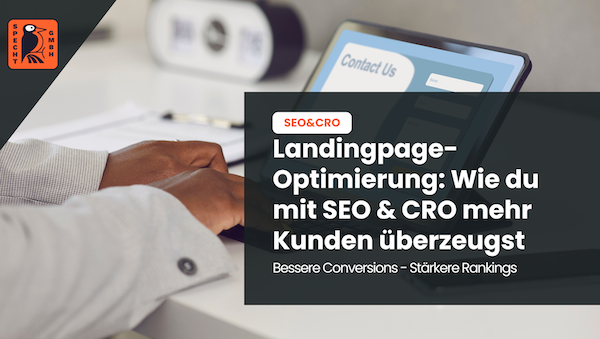Short & sweet: What is a favicon?
A favicon is a small icon or graphic that is displayed on a website and usually appears next to the page title in the browser tab. It serves to represent the visual identity and branding of a website and enhances the user experience. A favicon also contributes to the recognition of a website and is therefore an important element for a professional and appealing website.
There are several steps to creating a favicon. First, the correct size and format should be determined. Then a suitable design and an appealing graphic are required. Once the favicon has been created, it must be implemented into the website. This can be achieved by adding a specific code to the HTML header of the website.
To add a favicon to a website, you need to insert the appropriate code into the HTML header. There are also certain tools and plugins that make the process easier. It's important to keep in mind some tips for using favicons, such as emphasizing simplicity and clarity, being consistent with the brand image, and testing and optimizing the favicon to ensure the best possible display. A well-designed favicon can help improve the look and feel of your website and provide a memorable experience for your users.
Key takeaway:
- What is a favicon? - A favicon is a small graphic icon that is usually displayed next to the website title in the browser tab.
- What are the functions of a favicon? - A favicon serves to represent the visual identity of a website, improve the user experience, and enable increased recognition.
- Why is a favicon important for a website?
- Visual Identity and Branding - A favicon helps establish a website's visual identity and reinforce its brand image.
- Better user experience - The presence of a favicon in the browser tab improves the user experience by allowing users to find the desired website faster.
- Increased recognition - By using a unique favicon, a website can be more easily distinguished and recognized from others.
- How to create a favicon?
- Size and format - A favicon should have a size of 16×16 pixels and be saved in ICO format.
- Design and Graphics - A favicon should be simple, clear, and easily recognizable for the best visual impact.
- Creation and implementation - A favicon can be created using graphics software and then embedded into the HTML code of the website.
- How to add a favicon to a website?
- Tips for using favicons
- Simplicity and clarity - A favicon should be simple and clearly designed to improve readability and recognizability.
- Consistency with brand image - The favicon should be consistent with the website's brand image to ensure a cohesive visual identity.
- Test and optimize - It is important to test the favicon on different browsers and devices and make adjustments as needed.
-
Free
SEO strategy meeting
In a free SEO strategy talk, we uncover untapped potential and develop a strategy to help you become more successful on Google.

- More organic visibility
- More organic visitors to your website
- More inquiries & sales
What is a favicon?
A favicon is a small icon or logo that appears on a website. It is usually displayed next to the name of the website in the address bar of the browser. The favicon serves as a visual identifier for the website. It is also visible on bookmarks and tabs.
A favicon can increase the recognizability and professionalism of a website by incorporating a brand's logo or symbol, thus contributing to the website's visual identity.
To create a favicon, you need to create or convert a graphic file in ICO format. The ICO format allows the icon to be displayed in different sizes to meet the requirements of different browsers.
Adding a favicon to your website is relatively simple. You need to insert the code into the header section of your HTML file and enter the URL to the favicon graphic.
A favicon is not a must for a website, but it can improve its appearance and brand perception. It is a small but important component of a professional web design.
What are the functions of a favicon?
A favicon has various functions on a web page. Here is a table that shows the different functions of a favicon:
| Improving the user experience |
| Increase brand awareness |
| Increase of the recognition value |
| Improvement of the screen organization |
A favicon enhances the user experience by providing a visual representation of the website or brand and allowing users to more easily identify the website in their bookmarks or favorites. It also increases brand awareness, as the favicon represents the brand's logo or icon. Recognition is increased as the favicon is always displayed when the web page is loaded in a browser. It also improves screen organization, as the favicon serves as a visual element to distinguish between different tabs or open web pages.
These features make a favicon an important element of any website, as it helps improve user experience and reinforce brand identity.
Why is a favicon important for a website?
A favicon can breathe life into a website and give it character. In this section, you'll learn why a favicon is important for a website. Dive into the many benefits a well-designed favicon can provide, from enhancing visual identity and branding to creating a better user experience and increased recognition. Let's discover how a small image can have a big impact.
1. visual identity and branding
| Subtopic: 1. visual identity and branding |
|---|
| Visual identity and branding are crucial to a website's image. |
| A website with a professional and consistent visual appearance leaves a lasting impression on visitors. |
| The logo and color scheme of a website are important elements to establish visual identity and strengthen branding. |
| Using the logo as a favicon gives the website a consistent and instantly recognizable visual marker. |
| The favicon appears in the browser toolbar, bookmarks and tabs, which directly attracts users' attention. |
| It improves the user experience by allowing users to quickly identify and distinguish the website from other tabs or bookmarks. |
A pro tip: Make sure the favicon is clear and simple to improve recognition. Use the logo or an iconic symbol that represents your brand. Test different sizes and formats to make sure the favicon is easily visible on different devices. Make sure the favicon is properly inserted into the HTML code of the website so that it displays properly. By carefully designing and implementing a favicon, you can ensure that your website stands out visually and becomes more user-friendly.
2. better user experience
A better user experience is an important goal for any website. By using a favicon, you can achieve just that.
| Visual marking | A clear and memorable visual marker on the tab or in the bookmarks bar makes your website more recognizable and easier for users to navigate. |
| Faster loading | A well-optimized favicon in the right size and format can speed up the loading of your website and thus improve the user experience. |
| Professional impression | A high-quality favicon gives a professional impression and strengthens users' trust in your brand and website. |
| Improved recognition | A unique and appealing favicon can help users remember your website and visit it more often. |
| Consistency and branding | A well-designed favicon that blends seamlessly with your website's design and reflects your brand image will help build consistency and a strong brand. |
One tip to further improve user experience is to make sure your favicon is the right size and format, and linked correctly. Also, regularly check that the favicon displays correctly on different browsers and devices. This way you can make sure that your favicon stands out visually for all users and achieves the desired effects.
3. increased recognition
Increased recognition of a favicon is an important aspect of designing a user-friendly website. A strong and well-designed favicon can help the website stay in users' minds. A memorable icon or logo in the browser tab increases the chances that users will recognize the website when they switch between different tabs. Whenever a user comes across the favicon, his attention is automatically drawn to the website. The favicon is also visible on mobile devices and can help the website stand out on the home screen of the phone. If the favicon is visually prominent and memorable, the likelihood of users revisiting the website increases. Consistent use of the favicon across all website pages promotes brand awareness and brand experience. Users will associate the favicon with the brand or company and recognize it more easily in the future.
How to create a favicon?
In this section, you'll learn everything you need to know! We'll discuss the right size and format, as well as tips on design and graphics. Additionally, you'll learn how to create and successfully implement your favicon. Get ready to create your own unique favicon and make your website shine!
1. size and format
| Favicon size | Pixel | Format |
| 16×16 | 16 Pixel | .png file |
| 32×32 | 32 Pixel | .png file |
| 48×48 | 48 Pixel | .png file |
| 64×64 | 64 Pixel | .png file |
| 128×128 | 128 Pixel | .png file |
| 180×180 | 180 Pixel | .png file |
The size and format of a favicon are important aspects when creating it. The size is specified in pixels and the format should be a .png file. Common sizes for favicons are 16×16, 32×32, 48×48, 64×64, 128×128 and 180×180 pixels. It is important to choose the right size and format to ensure that the favicon is displayed optimally on different devices and platforms.
2. design and graphics
In terms of design and graphics, the following information should be considered for favicons:
| Design and graphics | - The favicon should have a size of 16×16 pixels. |
| - It should be in .ico format or as a .png file. | |
| - The favicon should be correctly linked in the HTML header of the website. | |
| - It should be highly visible and memorable to visually stand out on the mobile home screen or other mobile devices. | |
| - It should be simple and clearly designed to improve the usability of the website. | |
| - The design should be consistent with the brand image of the website. | |
| - It is advisable to test the favicon before implementation and adjust it if necessary to achieve the best possible effect. |
3. creation and implementation
The creation and implementation of a favicon can be done in several steps:
1. set size and format: a favicon should usually be a square image file and have a size of 16×16 pixels. The .ico format is most common, but .png is also accepted.
2. Create design and graphics: Design the favicon so that it stands out visually and is easily recognizable. It should be clear and simple to be easily visible on different device screens.
Upload the favicon to your server and link it in your HTML head area with the
-tag. Make sure that the link is linked correctly so that the favicon is displayed on all pages of your website.
There are also some tips that can help you create and implement a favicon:
1. simplicity and clarity: keep the design simple and clear to ensure that the favicon is recognizable at first glance.
2. consistency with brand image: the favicon should reflect the brand image and design of your website to ensure a consistent online presence.
3. test and optimize: Check the favicon on different browsers and devices to ensure that it displays properly. Optimize the size and quality of the favicon to reduce load times.
With these steps and tips, you can create and implement an attractive and well-functioning favicon for your website.
How to add a favicon to a website?
To add a favicon to a website, you should follow the steps below:
area of your page:
- Create a square image with dimensions 16×16 pixels or 32×32 pixels. The image should be in .ico format.
- Save the favicon to your server or other online location.
- Go to the website of your content management system or edit the source code of your website directly.
- Paste the following HTML code into the
- Replace "path_to_favicon.ico" with the actual path of your favicon image
- Save the changes and upload your website.
- Check your website to see if the favicon is displayed. It may take some time for the favicon to update in browsers.
Did you know? The word "favicon" is an abbreviation for "favoritesicon" and dates back to the early days of the Internet, when bookmarks in web browsers were called "favorites". The favicon serves to visually represent a website and makes it easier for users to recognize and distinguish between different websites in their bookmarks or tabs.
Tips for using favicons
A well-designed favicon can add value to a website and give its brand a unique identity. We'll look at practical tips for using favicons in this section. You'll learn how simplicity and clarity can contribute to the favicon's effectiveness. You'll also discover how being consistent with your brand image can build trust. Finally, you'll learn how continuous testing and optimization can maximize your favicon's potential. The favicon will thus become a powerful visual element of your website.
1. simplicity and clarity
A successful favicon is characterized by simplicity and clarity.
|
2. consistency with the brand image
Brand image plays an important role in the design of a website, especially in relation to the favicon. A favicon should be consistent with the brand image to promote recognition and branding.
A favicon can be the logo or a symbol of a brand. If the favicon matches the brand image, users can immediately recognize which brand is behind the website. Using colors, fonts, and symbols that match the brand image strengthens the visual marker and improves the user experience.
It is important that the favicon is displayed consistently in different browsers and on different devices. This ensures that the website looks professional and trustworthy on all platforms. The favicon should be linked in the right size and format to ensure optimal display.
By being consistent with the brand image, the favicon can also help you stand out from the competition and stand out visually. It allows users to recognize and identify with the brand more easily.
Overall, the consistency of the favicon with the brand image contributes to a positive brand experience and increases the likelihood that users will recognize and visit the website. Therefore, it is important to consider this element when designing and optimizing user-friendly websites.
3. testing and optimization
When testing and optimizing a favicon, there are some important steps to consider:
- Check the size and format of the favicon to make sure it meets the requirements. A favicon should ideally have a size of 16×16 pixels and be in .ico format.
- Make sure that the favicon is correctly included in the HTML head of your website. Use the code and check the linking.
- Test the favicon in different browsers and on different devices to ensure that it displays correctly. In particular, check the display on classic browsers such as Internet Explorer 5 and 9, as well as on mobile devices.
- Optimize the favicon, if necessary, to ensure that it is easily visible in all situations. This may mean, for example, that you adjust the size of the icon or optimize icon design effects.
A good way to test and optimize the favicon is to use the favicon check tools of browsers like Google Chrome and Firefox. These tools provide a visual marker of the favicon on your website and help you design user-friendly websites with a visually prominent favicon.
Tip: Test the favicon on different touch displays to ensure that it displays correctly on devices with Retina displays and in Safari Reader mode.
- Do you know my SEO newsletter?
Register now and receive regular tips from the experts.
Frequently asked questions
What is a favicon?
A favicon is a small icon used by web browsers to identify a website. It appears in the bookmarks list, next to tab titles, and on the home screen of smartphones.
How to add a favicon to a website?
There are two ways to insert a favicon into a web page: by placing a file called "favicon.ico" in the root of the domain or by referencing it in the HTML code.
In which formats can a favicon exist?
Favicons can be in different image formats such as .ico, .gif, .png and .svg.
What sizes and color depths are recommended for different image formats?
The recommended sizes and color depths for different image formats are specified. For example, the default size for a favicon is 16×16 pixels, but it can also be 32×32 or 48×48 pixels.
Where should you place the favicon?
It is recommended to place the favicon in the root directory of the website. If the favicon is not found in the expected location, it may slow down the website and affect the user experience.
Are favicons important even on mobile devices?
Yes, favicons are also important on mobile devices, especially iOS and Android. Apple, for example, requires a 512×512 pixel .png file specified in a meta tag for touch icons.






